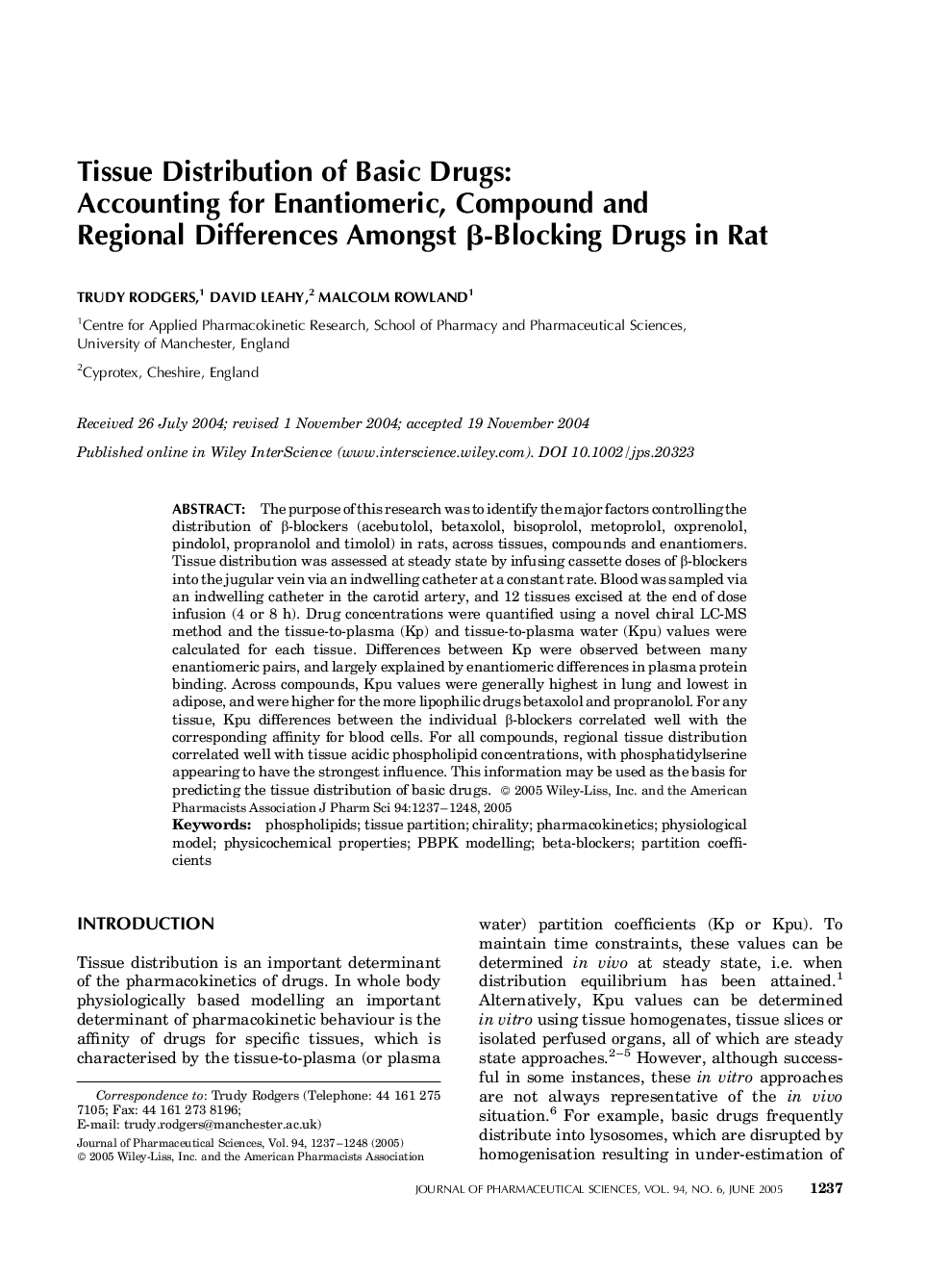| Article ID | Journal | Published Year | Pages | File Type |
|---|---|---|---|---|
| 8994657 | Journal of Pharmaceutical Sciences | 2005 | 12 Pages |
Abstract
The purpose of this research was to identify the major factors controlling the distribution of β-blockers (acebutolol, betaxolol, bisoprolol, metoprolol, oxprenolol, pindolol, propranolol and timolol) in rats, across tissues, compounds and enantiomers. Tissue distribution was assessed at steady state by infusing cassette doses of β-blockers into the jugular vein via an indwelling catheter at a constant rate. Blood was sampled via an indwelling catheter in the carotid artery, and 12 tissues excised at the end of dose infusion (4 or 8 h). Drug concentrations were quantified using a novel chiral LC-MS method and the tissue-to-plasma (Kp) and tissue-to-plasma water (Kpu) values were calculated for each tissue. Differences between Kp were observed between many enantiomeric pairs, and largely explained by enantiomeric differences in plasma protein binding. Across compounds, Kpu values were generally highest in lung and lowest in adipose, and were higher for the more lipophilic drugs betaxolol and propranolol. For any tissue, Kpu differences between the individual β-blockers correlated well with the corresponding affinity for blood cells. For all compounds, regional tissue distribution correlated well with tissue acidic phospholipid concentrations, with phosphatidylserine appearing to have the strongest influence. This information may be used as the basis for predicting the tissue distribution of basic drugs. © 2005 Wiley-Liss, Inc. and the American Pharmacists Association
Keywords
Related Topics
Health Sciences
Pharmacology, Toxicology and Pharmaceutical Science
Drug Discovery
Authors
Trudy Rodgers, David Leahy, Malcolm Rowland,
